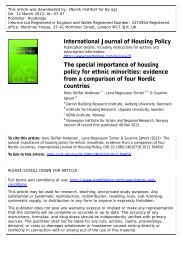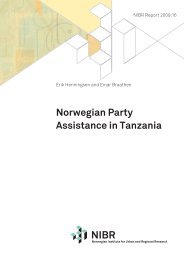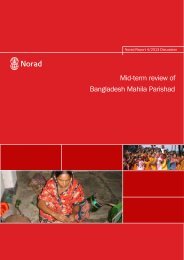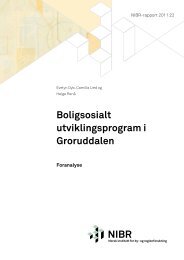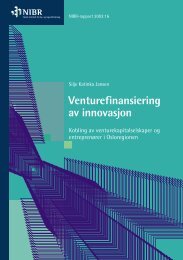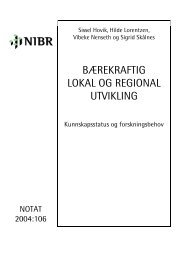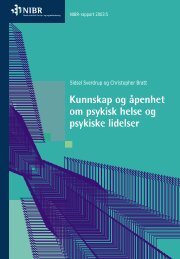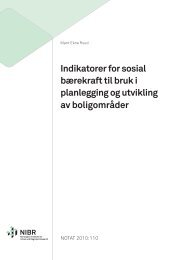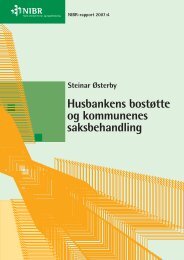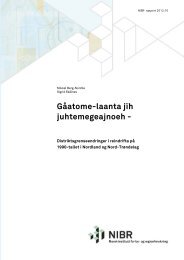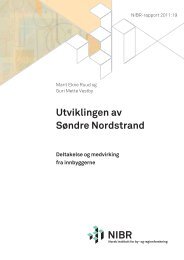Forvaltningsmuseenes og NIKUs ansvar og roller i forvaltningen av ...
Forvaltningsmuseenes og NIKUs ansvar og roller i forvaltningen av ...
Forvaltningsmuseenes og NIKUs ansvar og roller i forvaltningen av ...
- No tags were found...
You also want an ePaper? Increase the reach of your titles
YUMPU automatically turns print PDFs into web optimized ePapers that Google loves.
23The way ahead: The ideas of the administrative museumsand NIKU concerning the development of goodmanagement modelsThe ideas for new models set forth by the administrative museumsand NIKU in relation to expert advice, recommendations andarchaeol<strong>og</strong>ical surveys are based partly on the financial aspects ofthe current system, and partly on the way academic disciplines andprofessional roles are divided.The administrative museums want particularly to h<strong>av</strong>e a system offunding which secures adequate funding for activities such asartefact management, conservation, research and outreach, all ofwhich are currently funded by the basic allocations dispensed bythe Ministry of Education and Research and Ministry of CulturalAffairs respectively.With regard to ship finds and automatically listed underwaterartefacts and sites, the scientific communities tend to be rathersmall. This weakens preparedness. In the view of theadministrative museums themselves, one has the option either toincrease funding to ensure current capacity at the maritimemuseums or to gather activities t<strong>og</strong>ether in one or two largercentres. A third option would be to let the university museums dothe work of managing all the automatically listed artefacts and sitesand ship finds, after the model of Tromsø Museum and ScienceMuseum NTNU.The different options will h<strong>av</strong>e consequences of both a scientificand economic nature, and each should be considered in light ofthe impact on efforts to achieve the policy goals informing themanagement of the Norwegian cultural heritage. This should beevaluated further.A secondary issue here concerns the storage of ship finds. Shouldthey be stored t<strong>og</strong>ether at the university museums or, in line withthe current system, let the maritime museums, including TromsøMuseum and Science Museum NTNU, be in charge of classifyingand storing ship finds, while the other university museums classifyand store other artefacts discovered in connection with themanagement of automatically listed objects and sites.Several interviewees also spoke of the somewhat fragmentarynature of the system of heritage management, expressing a wish toNIBR-rapport 2012:30



